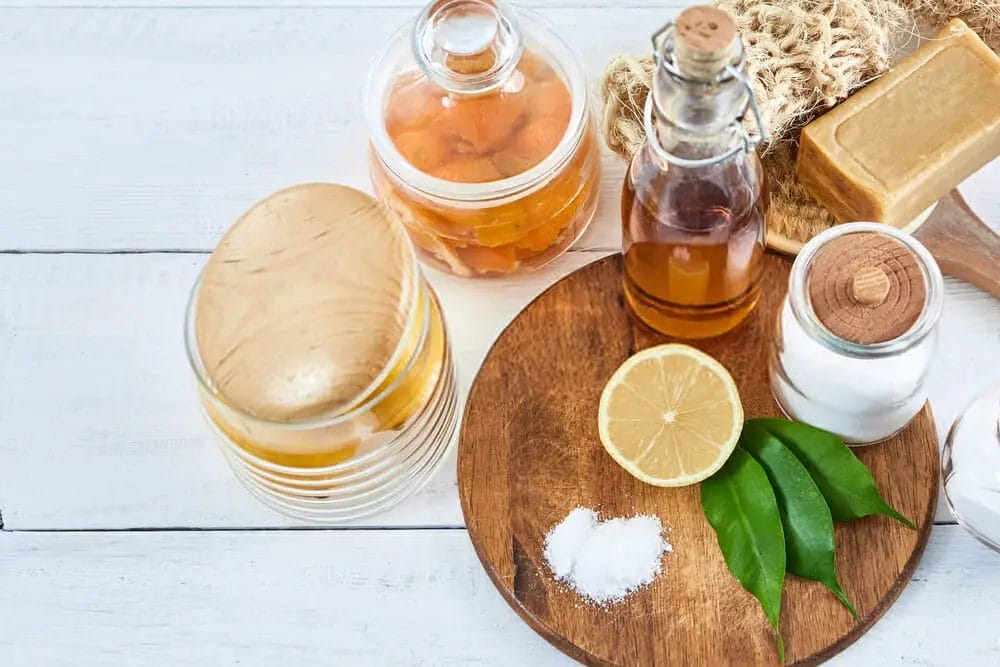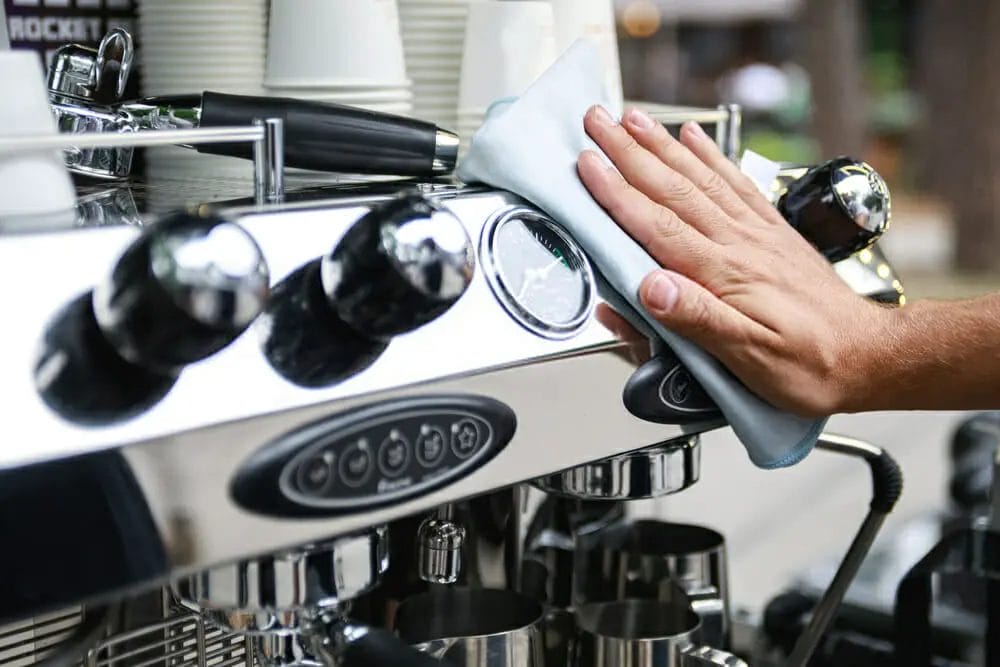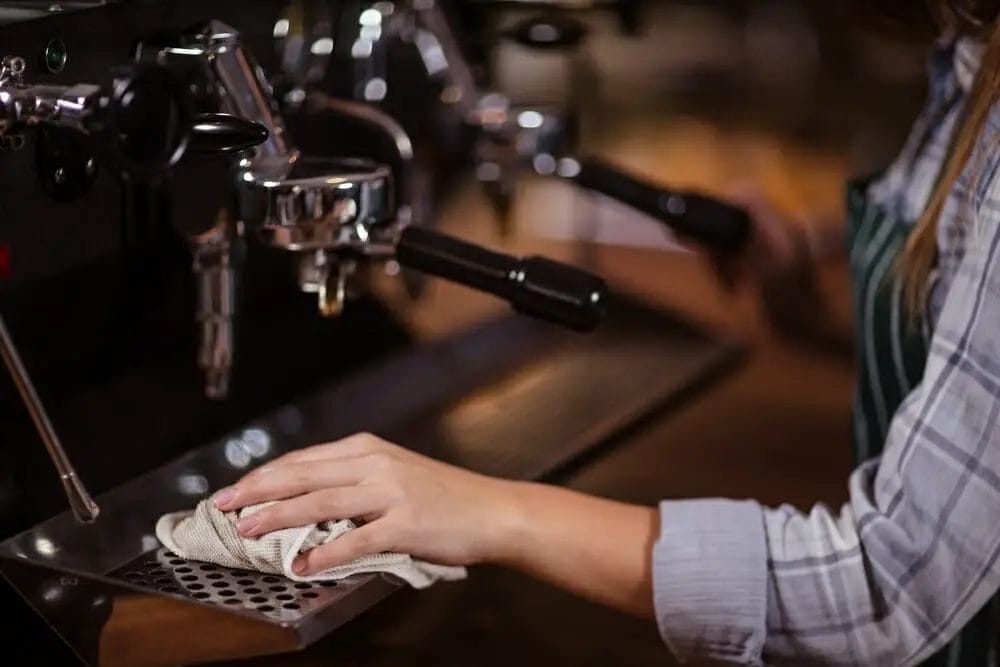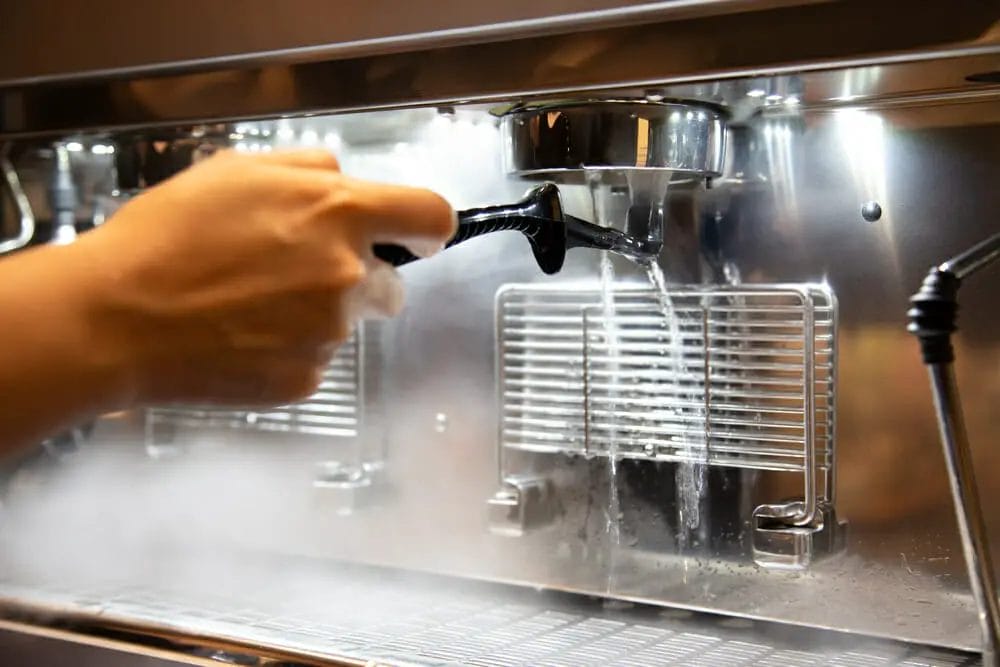A Guide To Clean Espresso Machine With Baking Soda

Coffee is one of the most popular drinks in the world. It is a drink that is enjoyed by people all over the world.
There are many different ways to make coffee, but espresso is one of the most popular.
Espresso is a robust coffee that forces hot water through ground coffee beans used for making espresso drinks. But when the machine gets old or has some problems, the coffee tastes different.
The reason is the grinder or the filters have been blocked or have fallen out. Thus, cleaning your espresso machine is an essential task. It will help keep your device working well and help prevent any unpleasant smells from building up.
One of the most common things to use to clean your espresso machine is vinegar, but unfortunately, it's not the best solution. To help you get rid of those nasty coffee stains on your device, That's where baking soda comes in.
The best way to clean an espresso machine is to use baking soda. But what if you don’t have baking soda? How can you clean an espresso machine without baking soda?
Will Baking Soda Clean a Coffee Maker?
Baking soda is an alkaline substance, part of the carbonate family. It has no smell, and it’s the most commonly used ingredient globally. Baking soda (sodium bicarbonate) is made from sources including shells and stalks of plants.

Whether it's a coffee carafe or the exterior of a coffee machine, you can use baking soda to remove all kinds of stains.
It is non-toxic, safe, and effective. The soft scrubbing action of the powder cleans off stains such as hard water, rust, and limescale without damaging the machine surface.
You should try cleaning your coffee maker with baking soda if you notice any sign of corrosion in your carafe or if you have any unpleasant smell coming from your digital coffee maker.
What makes baking soda a perfect cleaning component?
Here are some of the most important reasons to use baking soda for cleaning your espresso machine:
Deodorizing:
When used as a cleaning agent, baking soda can effectively reduce the foul odour of your coffee machine. Baking soda is a natural deodorizer that helps to remove any stinky smell from your coffee maker or refrigerator. It neutralizes the scent and will enjoy the fresh and clean atmosphere.
Baking soda is not only helpful in balancing the aroma, but it also has a soft scrubbing action that helps clean the surface quickly without damaging it.
Excellent grease cleaner:
Grease is a big problem that most people don’t want to face. It is challenging to clean grease stains from your stainless steel surface. You can try many methods, including using dish soap, vinegar, and even bleach.
However, these methods might not be the best for your machine because they can damage it or cause scratches on the surface if you use too much force.
With baking soda, there is no need to worry about damaging your machine’s surface or wasting some of your hard-earned money by buying commercial products that are not effective.
Great stain remover:
Baking soda is perfect for removing stains and cleaning the coffee machines. If you are looking for the best and most effective stain remover, baking soda is your ideal choice.
It's a non-abrasive "power sponge" that can absorb grease, grease stains and remove them without leaving any residue after cleaning.
How to clean an espresso machine using baking soda?

Step 1: preparation
Before you start cleaning your espresso machine, you should prepare two bowls filled with baking soda and water.
Water should be enough to fully cover the baking soda, while you need to leave some space on top of the bowl.
You must start with a bowl of water to pour in as much water as possible. However, you don’t want to use too much water because it could damage your machine or make it worse than it was before you started cleaning.
Step 2: first wash
After putting the prepared bowls in the machine, put some water in it. You should put enough water to cover all of your baking soda.
Then, pour all of the water on top of your bowl and mix well until you can see some foam (if you don't see any foam, it means that it is not enough water).
Step 3: remove all the removable parts.
After you have poured all of the baking soda, remove all the removable parts of your machine. Make sure that you can make every part of your machine that is removable and also make sure that you take out any components such as filters or carafes.
Step 4: start washing.
Next, put the “half-filled” bowl of water and the bowl of baking soda inside your machine. This way, you will be able to wash it in a very effective way.
Finally, put attachments such as portafilters, milk frothers, or other parts that you want to soak in the second bowl.
Step 5: Rinse
After your machine is full of water, empty the first bowl and then put it on top of your device. Pour some more water into it and put the other bowl with all the removable parts inside.
Fill up this bowl with enough water until your machine is full again. Keep pouring water until you have used all of the water you have prepared.
Step 6: Clean the outside
Next, fill up your machine with some more water and put the lid on it. After placing the top on your device, turn it on and let it run for about 30 to 70 seconds.
Step 7: drain
Finally, take out all the water from the bottom of the machine using a fine-meshed sieve. You should pour out all of the remaining water in one shot because any remaining water might harm your machine’s interior.
Do not pour out extra water after this because doing so can damage your device and make it worse than it was before you started cleaning.
What to avoid when cleaning espresso machine baking soda?

Although baking soda is a powerful cleaner, you must ensure that you use the proper cleaning solution for your espresso maker.
You should know that baking soda can eliminate the foul odour of your espresso machine, but it doesn't have any effect on plastic or rubber parts. In addition to that, it can cause damage to other surfaces such as stainless steel or plastic.
You should apply baking soda on your machine only in an emergency. An effective method for cleaning a coffee carafe is using a special solvents cleaner explicitly made for this situation.
Use this handy tool before you start cleaning with any other products because it will leave your coffee maker stain-free and sparkling clean after just one application.
Can you CLEAN AN ESPRESSO MACHINE WITH VINEGAR?
Vinegar is a natural, inexpensive, and effective way to clean your coffee machine. Vinegar and baking soda are perfect cleaning agents for cleaning coffee makers and various appliances.
Many people prefer to use vinegar as a cleaning agent instead of traditional cleaning products. It is because liquids such as vinegar or other chemicals do not leave any residue or damage the machine.
The main advantage of using vinegar is that it is an excellent natural cleanser, and you can use it on virtually any surface.
Simply pour the solution into a bowl and apply it to a soft cloth. Be careful not to get any solution onto the insides of your machines.
Another great thing about using vinegar is that it’s considered safe for all types of surfaces, unlike many other commercial cleaning products that can leave harmful chemicals behind after wiping down your machines or other appliances with them.
Why do you need to clean your coffee maker often?
Hard water and limescale
Hard water and limescale can build up on your coffee maker over time. Hard water is made up of calcium and magnesium. This mineral deposit is found in most types of water, but it can accumulate much faster in locations with hard water.
In addition, hard water is more difficult to remove due to its higher mineral content. Luckily, you can clean your machine easily with baking soda. Just use the same method as described above, and you will be able to thoroughly clean the insides of your machine in just a few minutes!
Lime deposits on your coffee machine cause limescale to react vigorously with many of the chemicals used while cleaning, such as vinegar, ammonia, or hydrochloric acid. We recommend using vinegar or baking soda when washing your coffee machine but avoid ammonia.
It can damage the insides of your device and lead to leaks. Even though vinegar works well to remove stains, you should not use it when removing lime deposits from your coffee maker.
Bacteria and mould
If you are not careful when cleaning your coffee machine, you can damage its interior. Bacteria and mould can quickly multiply in dirty machines and affect the taste or aroma of the coffee.

If you have a damp cloth at home, you can clean your machine by wiping off the entire exterior surface with it.
Then, wipe it gently in one area for about three minutes. The thing is that you don’t need to use extra water or wet wipes because dry clothes work just fine.
Frequently Asked Questions:
Is the care and well-being of your espresso machine vital to you?
Yes, the care and well-being of your espresso machine are essential. Especially if you keep it in your kitchen, it is necessary to clean the machine regularly.
You should be constantly aware of the amount of time since your last cleaning. If you do not do it routinely, the taste and aroma of your coffee might differ from what you usually enjoy. In addition, it can lead to a loss of confidence among your friends and family.
Does the filter basket need cleaning?
You need to clean the filter basket only if there are clogs. The insides of the filter basket should not be touched, as this can lead to an infection in your machine and damage it.
Do I need to clean my coffee machine before brewing?
No, you don’t need to clean your coffee machine before brewing, but you should wash all removable parts of the device after each use.
If the tank or other components are dirty and may affect the quality of your coffee, you should clean them before brewing. However, these parts will not affect the taste or aroma of your coffee.
Or do you need to clean the entire system out?
You don’t need to clean the entire system out since there is no way for the coffee grounds to enter the water tank. So the only time you need to clean out your entire machine is after brewing coffee.
Conclusion:
Cleaning coffee machines is a great way to keep your coffee tasting fresh and the machine working correctly.
If you are concerned about the quality of your coffee, it's essential to clean your espresso machine regularly. Otherwise, it may be best not to drink coffee in the first place.






